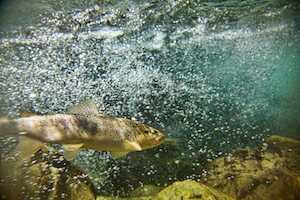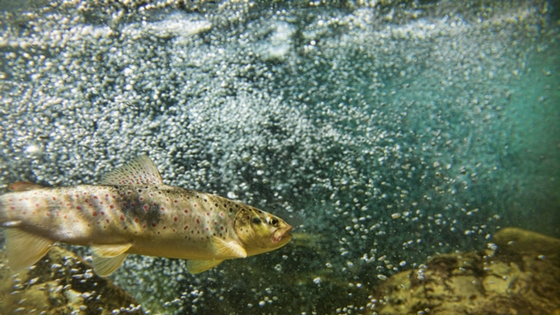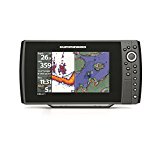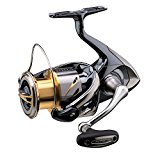Brown Trout Habitat

 Brown Trout prefer cold, clear rivers and streams that are well-oxygenated. Temperature range of about 54°F to 65°F degrees is ideal. They have a preference for upland waters, especially large streams in mountainous areas.
Brown Trout prefer cold, clear rivers and streams that are well-oxygenated. Temperature range of about 54°F to 65°F degrees is ideal. They have a preference for upland waters, especially large streams in mountainous areas.
However, they can also do well in water that’s between 65°F to 75°F degrees, which is a much higher temperature than many other trout and charr will tolerate.
Besides rivers and streams, the Brown Trout can also live in landlocked lakes and are also sea-going fish.
This adaptability has enabled them to inhabit all but the coldest continent in the world, Antarctica.
Brown Trout cover or ‘Where to find them’
Cover is important to every animal, even those at the top of the food chain proceed with caution.
Brown Trout prefer lakes, rivers and streams that have
- rocky bottoms
- submerged rocks
- undercut banks
- overhanging vegetation, and
- sunken wooden debris
Especially those Brown Trout that live in rivers and streams.
Studies have shown that rivers without over-hanging shrubs, trees and sunken debris are more sterile, faster flowing and have fewer nutrients.
The reason is that sunken trees and other plant life and rocks help slow the water down. It also creates pools and riffles where trout, charr and salmon prefer to lay when resting.
These ideal conditions create the cycle that results in attracting more Brown Trout as well as other animal and insect life. Therefore an ecosystem is established with more food and again attracting more life.
Conservation Status
Brown Trout have the largest freshwater distribution of any predatory fish in the world.
They have the ability to survive in both cold water and moderately warm water and are not fussy eaters. As such, they’re not under threat at all as a whole.
However when it comes to individual rivers and streams, there are locations where their habitat is under threat.
Habitat loss in the Mediterranean has resulted in as much as a 20% reduction in Brown Trout populations in many rivers and streams. The cause is a warming trend that started in the late 1980s and has not stopped yet.
It’s widely believed that this is due to the global warming influenced by human activities rather than by planetary warming due to a reduction in cloud cover and an increase in sun spots.
Mediterranean Habitat Destruction
Unfortunately the increased temperatures of the Mediterranean and its feeder rivers and streams are not only affecting Brown Trout, but many other native fish species as they have less tolerance for increased water temperatures.
The problem stems mainly from an unwillingness of working governments to recognize the source of the problem and its consequences in order to act. This inaction is in contrast to the ozone destruction issue detected in the early 1980s when governments acted quickly and took the required action.
Until the issue of global warming become clear in its cause and effects, any serious and effective action is unlikely to occur.


